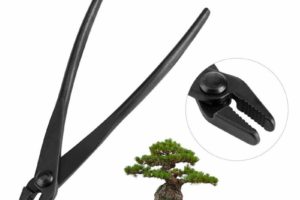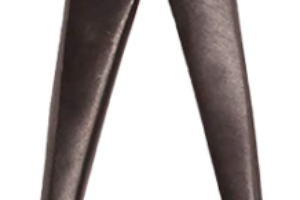Developing a Korean Hornbeam bonsai
Korean Hornbeam Bonsai Fall Pruning
Korean Hornbeam Bonsai (Carpinus Turczaninovii Hance)

Bonsai is a traditional Japanese art form that involves growing miniature trees in small pots or containers. Korean hornbeam bonsai (Carpinus turczaninovii Hance) is one of the most popular species used for bonsai cultivation. With its unique characteristics and beautiful appearance, the Korean hornbeam bonsai has become a favorite among bonsai enthusiasts. In this blog post, we will take a closer look at the Korean hornbeam bonsai and learn more about how to care for and maintain it.
The Korean hornbeam is a deciduous tree that is native to Korea and China. It is a medium-sized tree that can grow up to 40 meters tall in the wild. The bark of the tree is gray-brown and smooth, while the leaves are oval in shape and have a glossy appearance. The leaves are also serrated along the edges and turn yellow in the fall, which adds to the beauty of the bonsai.
One of the main benefits of growing a Korean hornbeam bonsai is its versatility. The tree is very adaptable and can grow in many different environments, including full sun or partial shade. It is also hardy and can tolerate a wide range of temperatures, making it a great choice for bonsai enthusiasts who live in different climates.
When it comes to caring for the Korean hornbeam bonsai, there are a few important things to keep in mind. First, the soil is one of the most important aspects of caring for your bonsai. The soil should be well-draining and contain the right balance of nutrients to help the tree grow healthy and strong. You can purchase specialized bonsai soil mix, or make your own mix using a combination of sand, akadama, and pumice.
Watering the Korean hornbeam bonsai is also crucial for its health. Over-watering the tree can lead to root rot, so it’s important to monitor the soil moisture levels and only water the tree when it needs it. During the summer months, the tree may need to be watered every day, while during the winter, it may only need to be watered once a week.
Pruning is another important aspect of caring for the Korean hornbeam bonsai. The tree should be pruned regularly to maintain its shape and size. Pruning also helps to stimulate new growth and encourages the tree to produce more branches. When pruning the Korean hornbeam bonsai, it’s important to make clean cuts and avoid leaving any stubs, which can lead to rot.
Another important aspect of caring for the Korean hornbeam bonsai is fertilization. The tree should be fertilized regularly to provide it with the necessary nutrients to grow and thrive. A balanced fertilizer should be used, such as a 10-10-10 or 20-20-20 formula. It’s important to follow the manufacturer’s instructions when applying fertilizer to your bonsai.
Finally, it’s important to protect the Korean hornbeam bonsai from pests and diseases. The tree is relatively hardy and resistant to many pests and diseases, but it is still important to monitor it regularly for any signs of trouble. If you notice any signs of pests or diseases, you should take action immediately to prevent them from spreading.
When looking for a Korean hornbeam bonsai for sale, it’s important to choose a reputable dealer or nursery that specializes in bonsai trees. A well-established bonsai dealer will be able to provide you with a healthy tree that is well-suited for your growing conditions. It’s also important to choose a tree that has a good root system and is the right size for your pot.
Korean hornbeam bonsai trees, also known as Carpinus turczaninovii Hance, are a popular choice for bonsai enthusiasts due to their distinctive appearance and relative ease of care. These deciduous trees are native to parts of Korea and Japan and are prized for their small leaves, smooth gray bark, and distinctive branching patterns.
When it comes to growing Korean hornbeam bonsai, there are a few key considerations to keep in mind. For starters, it’s important to choose a well-draining soil mix that will help to prevent root rot. A mix of akadama, pumice, and organic material is often recommended, as it provides the right balance of moisture retention and aeration.
Korean hornbeam bonsai also requires a good deal of sunlight in order to thrive. While they can tolerate some shade, they will grow best when exposed to at least four hours of direct sunlight each day. This will help to encourage healthy growth and promote the development of strong, robust branches and leaves.
In terms of watering, Korean hornbeam bonsai should be kept consistently moist but not soaking wet. This means watering them thoroughly on a regular basis and checking the soil moisture levels frequently to ensure that the soil is not becoming too dry. In hot or dry weather, you may need to water your tree more frequently, as it will be more susceptible to moisture stress.
When it comes to pruning and shaping your Korean hornbeam bonsai, it’s important to be patient and let the tree grow naturally for the first year or two. This will give the tree a chance to establish its roots and get a good start. After that, you can begin to selectively prune back shoots and branches as needed to encourage the desired growth patterns and promote the overall health and appearance of the tree.
Korean hornbeam bonsai are also well-suited to wiring, which can be used to manipulate the shape and direction of branches. However, it’s important to be mindful of the wire and check it frequently, as it can cause damage to the tree if it’s left on for too long. In general, the wiring should be removed after six to eight weeks or when it begins to dig into the bark.
In terms of pests and diseases, Korean hornbeam bonsai are relatively resistant. However, they can be prone to powdery mildew, which is a type of fungal disease that can cause the leaves to become covered in a white, powdery substance. This can be treated by applying a fungicide, but it’s important to be proactive in preventing the disease by providing good air circulation and avoiding overhead watering.
If you’re looking to buy a Korean hornbeam bonsai, there are a number of different options to consider. Some nurseries specialize in bonsai and may have a wide selection of species and sizes to choose from. Online retailers and specialty bonsai stores can also be a good option, as they may offer a larger selection of trees and accessories. When shopping for a Korean hornbeam bonsai, look for a tree with a well-established root system, healthy branches and leaves, and a strong, upright trunk.
In conclusion, Korean hornbeam bonsai are an excellent choice for bonsai enthusiasts of all levels, from beginners to experienced growers. With their distinctive appearance, ease of care, and resistance to pests and diseases, these beautiful trees are sure to provide you with years of enjoyment and satisfaction. Whether you’re looking for a stunning centerpiece for your home or a peaceful hobby that you can enjoy for years to come, a Korean hornbeam bonsai is an investment that you won’t regret.






Leave a Reply
Your email is safe with us.
You must be logged in to post a comment.